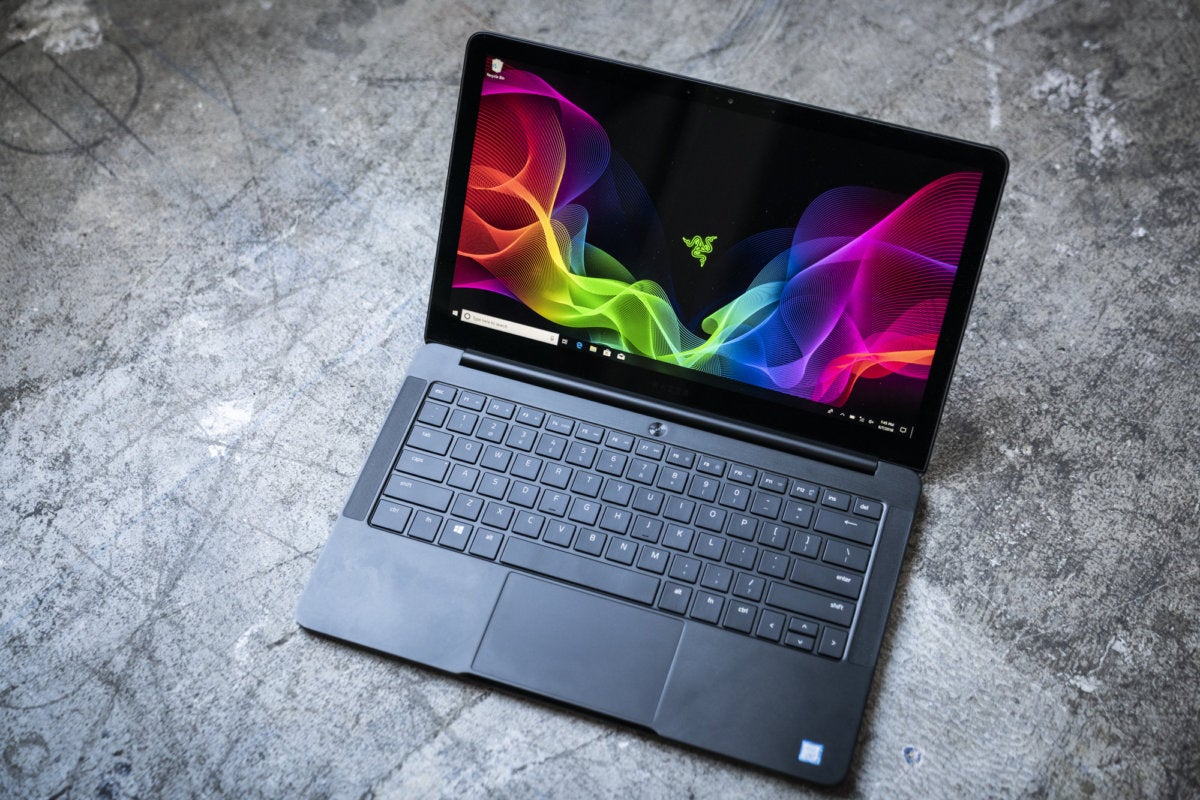


The volume is also very good, with just a hair over 83 dB(A) measured with the SPL meter an inch over the trackpad. With the limited space available, there’s just no way to fit in speakers large enough to really cover the entire audio range, but the Stealth sounds as good as any Ultrabook out there. The result is great stereo separation, and the sound quality of the speakers is good for an Ultrabook. In this case, they are flanking the keyboard itself. Razer has also made room for the speakers on the top of the laptop. Microsoft has put the speakers right on the side of the display bezel on the Surface Book, which provides good stereo separation. The majority point them down, and then there are ones like the XPS 13 which put them on the side. Very few Ultrabooks manage to squeeze the speakers onto the top of the notebook. Comparing to other Ultrabooks, it is far from the top result we’ve seen. MSI’s GT80 Titan got over 100 Mbps higher on this test with that card.

The Razer Blade Stealth averaged 359 Mbps on our standard SMB file copy test, which is not the best result we’ve seen from a Killer 1535. Instead we’ll have to stick with the normal copy speed performance test. Since I’m no where near Josh, I won’t be able to use the Ixia WaveDevice to test Wi-Fi performance, which is kind of a pity. I’ve had good experiences with the Killer network cards on other gaming laptops in the past, and the Stealth is no exception.
#CPU THROTTLED DOWN RAZER BLADE STEALTH SOFTWARE#
Killer has changed their business model quite a bit over the years, from expensive stand-alone network cards, to integrated solutions with some software features on top. Out of the box, the Stealth is pretty far from a gaming notebook, but of course once you pair it with the Razer Core external graphics, this use of a gaming solution makes more sense. The software is basically fancy QoS for your laptop, prioritizing gaming traffic to prevent simultaneous network usage from diminishing the latency for any gaming sessions. Killer bundles software which the company has designed to help with gaming – once again going back to Razer’s gaming roots. This gives a maximum connection speed of 866 Mbps, and of course real-life results will be less than that. For a wireless solution, Razer has moved to the Killer Wireless 1535, which is a 2x2:2 solution with support for 802.11ac.


 0 kommentar(er)
0 kommentar(er)
